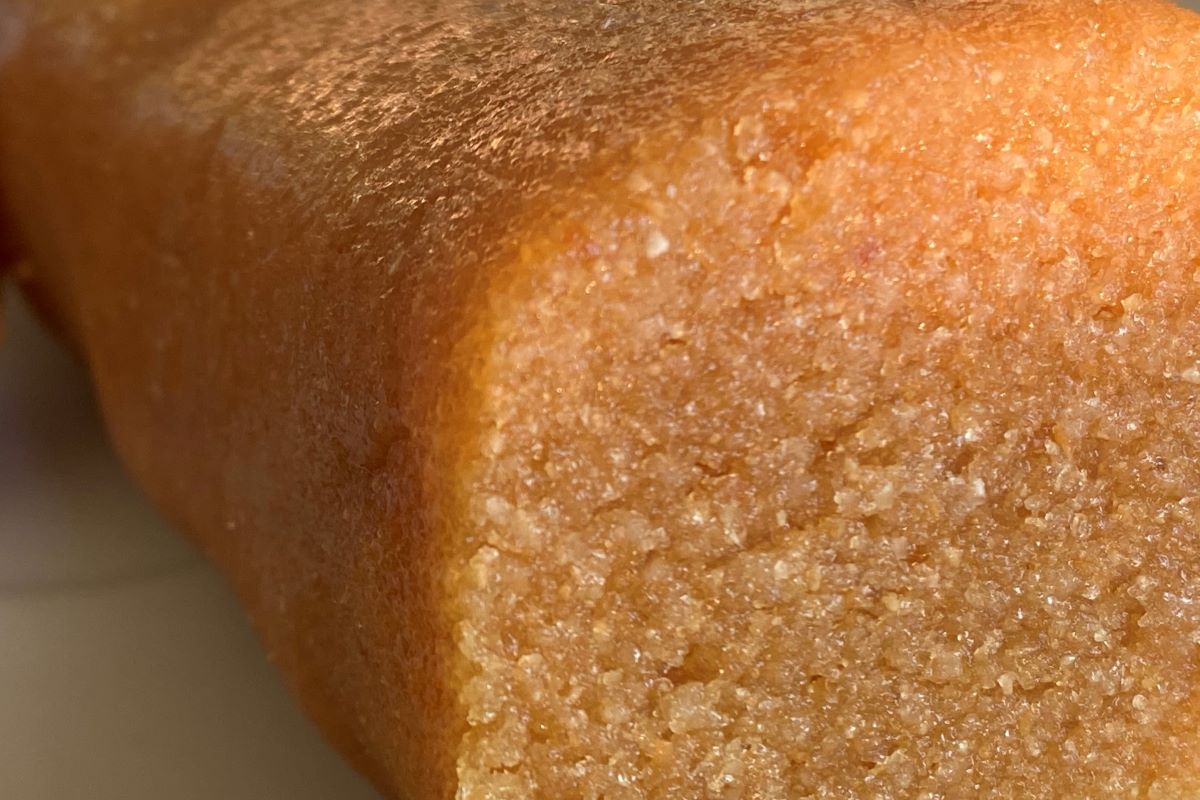Almond paste is the main ingredient in ‘banketstaaf’, a Dutch pastry but also appears in Christmas stollen and other premium raisin breads. The main ingredients are almond meal and (fine) crystal sugar. The almond paste is not to be confused with marzipan, which is also a mixture of almond meal but with icing sugar. The almond paste ideally contains 3 parts by weight almond meal and 2 parts sugar, where as marzipan is usually equal parts almond meal and sugar.
In general for marzipan, none of the almonds are roasted before grinding and egg white is used for binding. Rosewater is used for extra taste.
the art of making almond paste
Making almond paste is actually quite easy. When you buy almonds with the skin on, you need to blanch them first to de-skin them. After de-skinning, dry the almonds and roast 1/3 of the almonds for extra flavor. The almonds are ground in a kitchen blender. Prevent too much grinding otherwise oil is going to separate out (as indicated by the meal sticking to the sides). Of course you can also use purchased almond meal. I also add freshly grated lemon skin. You can add the fine crystal sugar to the almond meal in the kitchen machine or just mix it in a bowl. I use eggs to bring the mass together. 1 medium sized egg for a total of 275 g almond meal/sugar mixture.
The mixture can be stored in the fridge for a week or 10 days. But better to place it in the freezer when storing for a longer time.
Special equipment
- kitchen blender or kitchen machine

Almond paste
Ingredients
Ingredients for the paste
- 8 oz (225 g) castor sugar
- 12 oz (375 g) almonds
- 1 tsp lemon zest
- 2 medium sized eggs
- 1/2 tsp bitter almond extract (optional)
- a pinch of salt (optional)
- 2 tsp lemon juice (optional)
Instructions
Making the paste
- Assuming you do not start off from purchased almond meal, but start from raw almonds, blanch the almonds in boiling water for 30 seconds. Thereafter separate the almonds from the hot water using a sieve or a colander or the like. Discard the water
- Let the blanched almonds cool down
- Meanwhile whisk the eggs and grate the zest from the lemon's peel
- When sufficiently cooled, take the skin off each nut. This should be an easy job, Discard the skins
- Air dry the almonds by spreading them on kitchen paper
- When sufficiently dry, place one third on a baking sheet or oven tray, covered with some parchment paper and roast in a preheated oven at 355 F (180 C) for 12-15 min
- Thereafter take them out and let them cool down
- When the nuts are cooled down enough, place all nuts in the kitchen blender and grind them. Do not overdo it as we want to prevent almond oil separating out (the early visible signs of this is almond meal sticking high to the wall of the container
- Then in a bowl mix the sugar with the almond meal and add the lemon zest, salt (if using), lemon juice (if using), and the bitter almond extract (if using) and part of the eggs and bring together. Kneed a bit until the mixture feels pliable and the sugar grains cannot be independently noticed when tasting. Add all the egg mixture to achieve this, if need be.
- Roll into a roll and tightly wrap it in plastic foil. Store it overnight in the fridge to let the taste develop
- The next day use it, or store for another week in the fridge or 6 months in the freezer.
Notes
Food allergy & intolerance information: nuts
Remarks
- When using not enough fluid (egg), the sugar will remain to be tasted as individual sugar grains. Too much fluid and the mixture remains too soft. In that case add some sugar and/or almond meal.
- Some bakers add a pinch of salt to the paste. Here we don’t.



